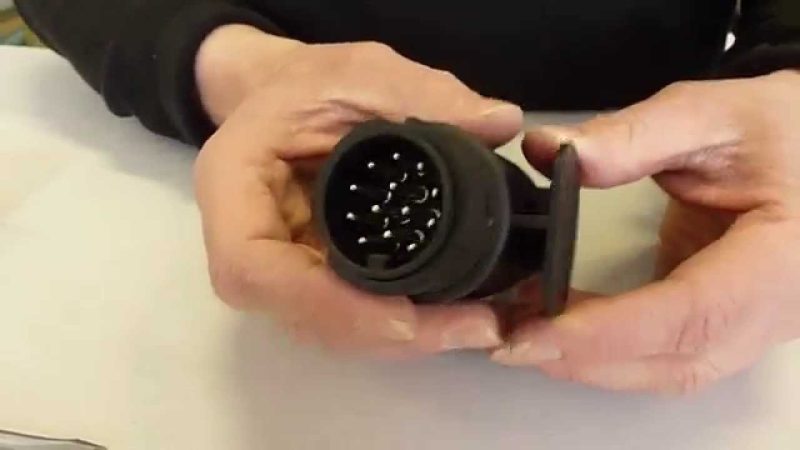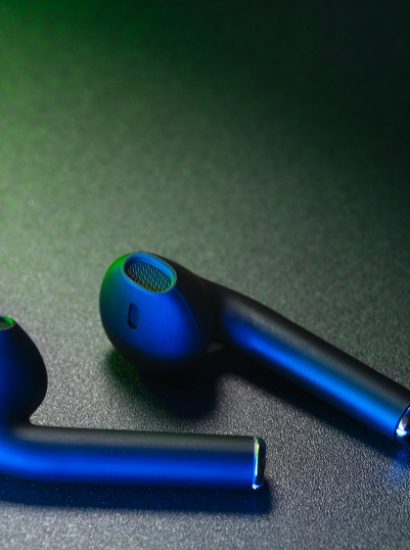Towing a trailer, caravan, or other vehicles involves several critical components, one of the most important being the trailer socket. Among the various options, the 13 pin trailer socket stands out due to its comprehensive functionality and reliability. This guide is designed to help beginners understand everything they need to know about the 13 pin trailer socket, from its benefits and installation process to troubleshooting tips and maintenance practices.
What is a 13 Pin Trailer Socket?
A 13 pin trailer socket is a type of connector used to link the electrical systems of a towing vehicle and a trailer. It facilitates the transfer of power for lights, indicators, brakes, and other electrical components, ensuring the trailer operates safely and effectively. Unlike its 7 pin counterpart, the 13 pin socket provides additional connections for features like reverse lights and battery charging.
Advantages of a 13 Pin Trailer Socket
The 13 pin trailer socket offers several advantages:
- Enhanced Functionality: Supports more features like reverse lights, fog lights, and auxiliary power.
- Better Safety: Ensures all lighting and signalling functions work properly, enhancing road safety.
- FutureProof: Suitable for modern trailers and caravans that require more connections.
- Waterproof Design: Often comes with improved sealing to protect against weather elements.
Components of a 13 Pin Trailer Socket
A 13 pin trailer socket comprises:
- Pins: Each pin serves a specific function, such as powering lights or indicators.
- Housing: Protects the internal wiring and connections from external damage.
- Cable Entry: Where the cables from the vehicle’s electrical system connect to the socket.
- Locking Mechanism: Ensures a secure connection between the vehicle and the trailer.
How to Install a 13 Pin Trailer Socket
Installing a 13 pin trailer socket involves several steps:
- Gather Tools and Materials: You’ll need the socket, a wiring kit, a drill, screwdrivers, and possibly a wiring diagram for your vehicle.
- Remove the Old Socket (if applicable): Disconnect and remove any existing trailer socket.
- Mount the New Socket: Attach the socket to a secure location on the vehicle, usually near the tow bar.
- Connect the Wires: Match the wires to the corresponding pins based on the wiring diagram. Ensure all connections are secure.
- Test the System: Verify that all lights and signals work correctly.
Wiring a 13 Pin Trailer Socket
Understanding the wiring is crucial:
- Pin 1: Left indicator
- Pin 2: Rear fog light
- Pin 3: Earth return for pins 1 to 8
- Pin 4: Right indicator
- Pin 5: Righthand tail light
- Pin 6: Stop lights
- Pin 7: Lefthand tail light
- Pin 8: Reverse light
- Pin 9: Permanent power (for battery charging)
- Pin 10: Switched power (for interior lights)
- Pin 11: Earth return for pins 9 to 12
- Pin 12: Reserved (usually not used)
- Pin 13: Common return for pin 10
Common Issues and Troubleshooting
Several issues can arise with a 13 pin trailer socket:
- Corrosion: Moisture can lead to rust and poor connections.
- Loose Connections: Vibration can cause wires to come loose.
- Wiring Errors: Incorrectly connected wires can lead to malfunctioning lights.
- Damaged Pins: Bent or broken pins can prevent proper connection.
Maintenance Tips for a 13 Pin Trailer Socket
To keep your 13 pin trailer socket in good condition:
- Regular Inspection: Check for signs of wear, corrosion, or damage.
- Clean Contacts: Use a contact cleaner to remove dirt and ensure good electrical contact.
- Secure Connections: Tighten any loose connections to prevent intermittent faults.
- Protect from Weather: Use socket covers or caps to shield from rain and debris.
Upgrading from a 7 Pin to a 13 Pin Socket
- Switching from a 7 pin to a 13 pin socket is often necessary for modern trailers:
- Compatibility: Ensure your vehicle’s electrical system can support the additional connections.
- Wiring Changes: Follow the wiring diagram for the 13 pin socket to connect new features.
- Testing: Thoroughly test all functions to ensure the upgrade was successful.
Safety Considerations
When working with trailer sockets:
- Disconnect Battery: Prevent accidental short circuits by disconnecting the vehicle’s battery before starting.
- Use Correct Tools: Ensure you have the right tools for the job to avoid damaging components.
- Follow Wiring Diagrams: Use accurate diagrams to ensure correct connections.
- Check Legal Requirements: Ensure your setup complies with local towing regulations.
Choosing the Right 13 Pin Trailer Socket
When selecting a 13 pin trailer socket:
- Quality: Opt for sockets from reputable brands that offer durability and reliability.
- Compatibility: Ensure the socket is compatible with your vehicle and trailer.
- Weather Resistance: Choose sockets with good sealing to protect against the elements.
- Ease of Installation: Look for sockets that come with clear instructions and all necessary components.
Conclusion
The 13 pin trailer socket is a versatile and essential component for anyone towing a trailer, caravan, or other equipment. Its enhanced functionality, safety features, and futureproof design make it a worthwhile investment. By understanding its components, installation process, and maintenance tips, beginners can confidently use and maintain their 13 pin trailer socket for a smooth and safe towing experience.
FAQs
1: Can I use a 13 pin trailer socket with a 7 pin trailer plug?
Yes, you can use an adapter to connect a 7 pin trailer plug to a 13 pin socket. However, you will not have access to the additional features supported by the 13 pin socket.
2: How often should I inspect my 13 pin trailer socket?
It’s advisable to inspect your trailer socket before each trip and perform a thorough inspection every few months or after exposure to harsh weather conditions.
3: Can I install a 13 pin trailer socket myself, or do I need a professional?
If you are comfortable with basic electrical work and have the necessary tools, you can install it yourself. However, if you are unsure, it’s best to seek professional help.
4: What should I do if my trailer lights are not working after connecting to the 13 pin socket?
Check for loose connections, damaged wires, or corrosion on the pins. Use a multimeter to test for continuity and ensure power is reaching the trailer.
5: Is the 13 pin trailer socket waterproof?
Many 13 pin sockets come with waterproof designs, but it’s important to use additional protective measures, such as covers, to enhance their durability against water exposure.









